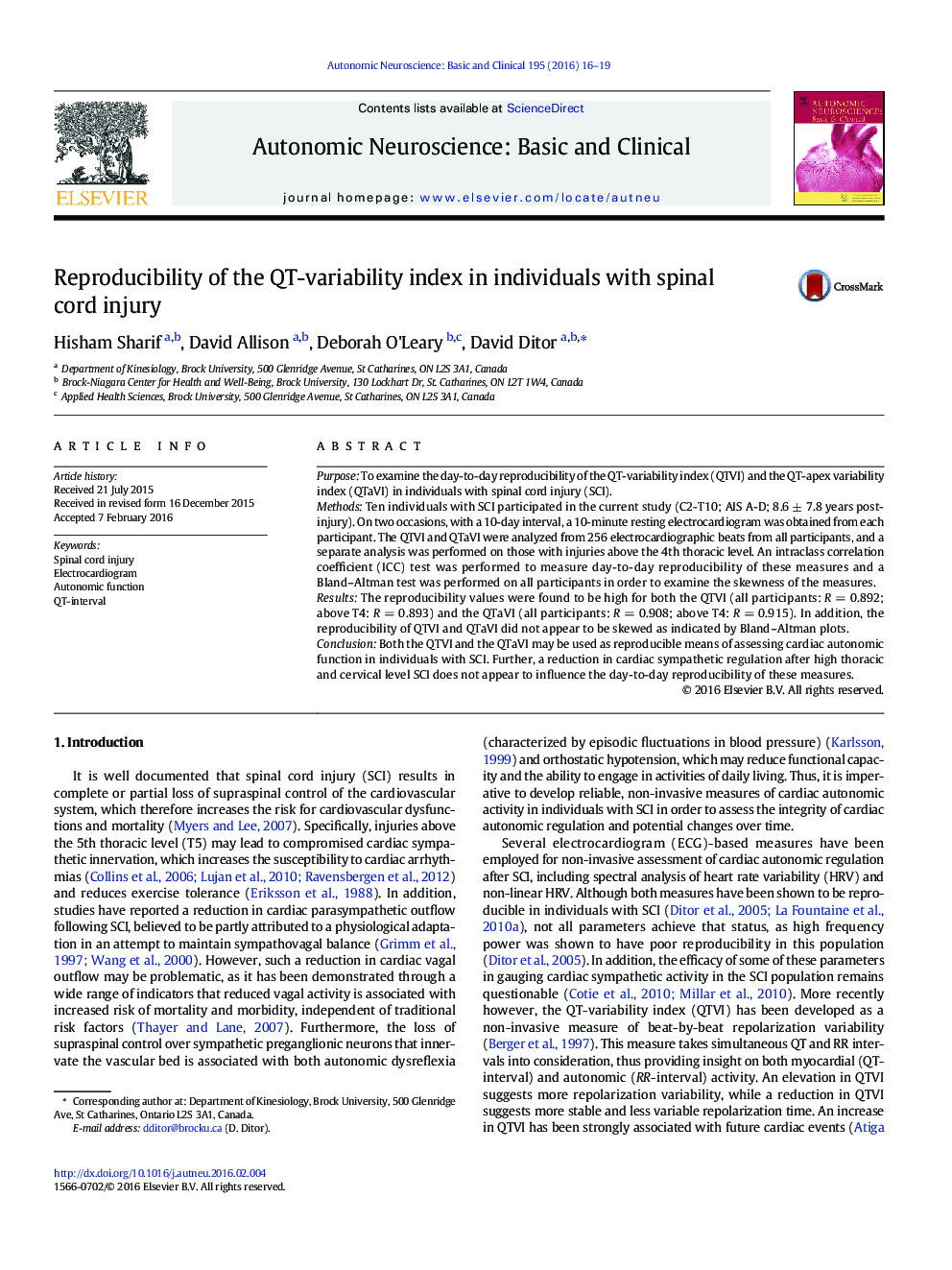| Article ID | Journal | Published Year | Pages | File Type |
|---|---|---|---|---|
| 3034470 | Autonomic Neuroscience | 2016 | 4 Pages |
•QT-variability index has excellent reproducibility after spinal cord injury (SCI).•This excellent reproducibility is maintained in injury levels above T4.•This is also similar for the QT-apex variability index.•This measure is a reliable tool as an index of cardiac autonomic function in SCI.
PurposeTo examine the day-to-day reproducibility of the QT-variability index (QTVI) and the QT-apex variability index (QTaVI) in individuals with spinal cord injury (SCI).MethodsTen individuals with SCI participated in the current study (C2-T10; AIS A-D; 8.6 ± 7.8 years post-injury). On two occasions, with a 10-day interval, a 10-minute resting electrocardiogram was obtained from each participant. The QTVI and QTaVI were analyzed from 256 electrocardiographic beats from all participants, and a separate analysis was performed on those with injuries above the 4th thoracic level. An intraclass correlation coefficient (ICC) test was performed to measure day-to-day reproducibility of these measures and a Bland–Altman test was performed on all participants in order to examine the skewness of the measures.ResultsThe reproducibility values were found to be high for both the QTVI (all participants: R = 0.892; above T4: R = 0.893) and the QTaVI (all participants: R = 0.908; above T4: R = 0.915). In addition, the reproducibility of QTVI and QTaVI did not appear to be skewed as indicated by Bland–Altman plots.ConclusionBoth the QTVI and the QTaVI may be used as reproducible means of assessing cardiac autonomic function in individuals with SCI. Further, a reduction in cardiac sympathetic regulation after high thoracic and cervical level SCI does not appear to influence the day-to-day reproducibility of these measures.
